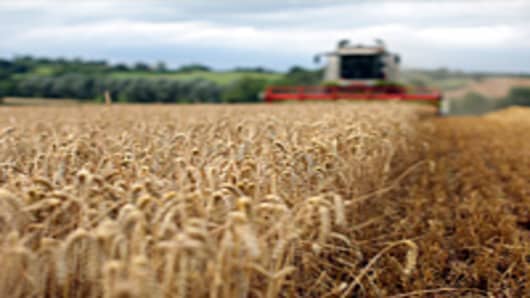If you're looking to profit from rising world food pricesor simply want to diversify your portfolio to hedge against inflation, the number of investing products continues to mushroom.
The first choice to make is whether you want exposure to food prices or to the stocks of agriculture-related businesses.
For a broad commodity basket of corn, sugar, soy, wheat and so on, PowerShare’s DBA is the big daddy.
It uses a rules-based system to track the Deutsche Bank Liquid Commodity Index. Others like E-Tracs FUD track different indices. Incidentally, these two also include cattle and hogs. If you don’t want exposure to livestock look at, say, UAG or i-Paths JJA .
But even DBA and FUD are fundamentally very different. DBA is an exchange-traded fund (ETF). FUD is an exchange-traded note. If you invest in a commodity-backed fund like DBA, be aware of the possibility of taxation at the end of the year regardless of whether you sell.
Also, bear in mind that to avoid taking physical possession of any corn or wheat, fund managers are effectively rolling futures contracts to mimic spot prices around the world.
So your returns will be affected by the slope of the futures curve on each individual commodity. Notes like FUD are synthetic, so they avoid some of those problems. But because notes do not physically hold the underlying assets, you could lose your investment if the issuer goes bankrupt.
Different products give you different exposures. I-Paths BAL is a cotton note that gained almost 5 percent on Friday.
PowerShares DAG is a note that splits between corn, soy, sugar and wheat, but holds twice the concentration of futures contracts, so it’s a leveraged, double-long. It is more of a trading tool than a way to track food prices over time.
If instead of direct exposure to food prices you would like to invest in businesses involved in agriculture, like Deere and Potash, take a look at MarketVectors MOO and PowerShares PAGG .
Both are funds directly investing in large-cap agriculture stocks around the world. MOO’s investments are, however, more concentrated in the United States; it’s bigger, more liquid and more widely held.
Watch CNBC's special coverage of food inflation, "Pricing Pain, Pricing Power," all day today, with TV reports by Simon Hobbs, Steve Liesman and Jane Wells. They will explain the causes and effects of food inflation and how to profit from it.


